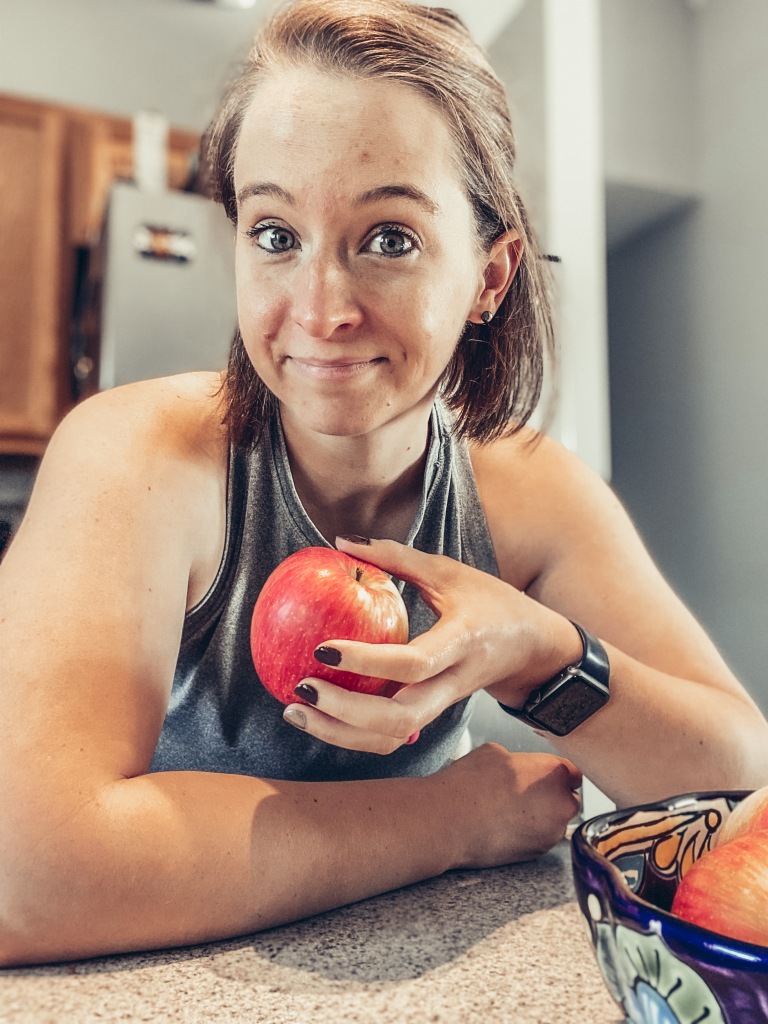What it actually is, which types to avoid, and which ones to include in your diet.
Jamie Staley, NASM-CPT, Pn1

What do you think of when someone says processed food?
Most of us think of chips, cookies, crackers, bars, ice cream, and others. But what is considered a processed food and what isn’t?
“According to the United States Department of Agriculture (USDA), processed food is defined as any raw agricultural commodity that has been subject to washing, cleaning, milling, cutting, chopping, heating, pasteurizing, blanching, cooking, canning, freezing, drying, dehydrating, mixing, packaging or other procedures that alter the food from its natural state.”
(Harguth, A. (2017). Processed foods What you should know. Retrieved October 05, 2020, from https://www.mayoclinichealthsystem.org/hometown-health/speaking-of-health/processed-foods-what-you-should-know)
A wide definition, yes? So basically everything you buy from the grocery store is a processed food. This is good to know because this means that not all processed food is “bad” or to be avoided.
Hyper-palatable Foods
Most people are not familiar with the term “hyper-palatable” and what it means. A hyper-palatable food is one that has a combination of fat, salt, and sugar to make the food easier to over-consume. “Hyper-” means “over” and “palatable” means “pleasant to taste.”
Such items fall into three categories. Foods where at least 25 percent of the calories come from fat and salt makes up 0.03 percent salt of their weight; those with at least 20 percent calories from fat and 20 percent from sugar; and items getting 40 percent of calories from carbohydrates and 0.2 percent of weight from salt.
Gander, K. (2019, November 06). Most food in America is hyper-palatable and “difficult to stop eating,” scientists say. Retrieved October 05, 2020, from https://www.newsweek.com/hyper-palatable-food-obesity-fat-sugar-carbohydrates-sodium-1469528
So usually when people are talking about processed foods being “bad,” they are usually referring to a hyper-palatable food.
Hyper-palatable foods don’t have to be cut from your diet completely, but if you are trying to lose weight, they may not help you reach your goals. Because of the higher amounts of sugar and fat, these foods boast high calories for small portion sizes.
Bottom line: you aren’t lacking willpower when you eat an entire package of Oreos. Food manufacturers spend a ton of time and energy trying to figure out how to make you eat as much of their product as possible.
This can be an issue if you are used to eating more hyper-palatable foods and then trying to change your diet to more “whole foods.”
Carrots and Oreos don’t hit the same, ya know?
So what am I supposed to eat?
First things first: don’t avoid a food just because it’s gone through some sort of processing.
Processed foods to include:
- Frozen fruit and veggies
- Protein shakes or bars
- Grains and legumes (quinoa, whole grain bread, oatmeal, rice, lentils, beans, etc.)
- Meat: chicken, lean ground beef, ground turkey, etc.
- Packaged salad kits
- Dressings with an avocado oil or extra-virgin olive oil base (steer clear of vegetable oil, soybean oil, and canola oil)
- Canned tomatoes, beans, and veggies (look for low-sodium when available)
- Eggs, aged cheese, milk or milk-replacements, greek yogurt (plain is better because of the sugar content)
However, for some items, the less processing the better. Some good examples: oils, bread, cheese, meat, canned vs. frozen veggies, sauces, soups, etc. Even though not all processing is bad, still aim to find the items as close to the original source as possible.
Second: include hyper-palatable foods carefully and rarely. Be prepared that it is much easier to overeat these types of foods and keep limited quantities in your house. Portion out things like chips and cookies to make sure you are only eating one serving size.
Hyper-palatable foods to approach with caution:
- chips
- cookies
- pastries
- ice cream
- donuts
- crackers
- heavily-processed meats: some lunchmeat, bacon, salami, bologna, pepperoni, hot dogs
- sugary cereals and some meal-replacement bars with a high sugar and/or fat content
- fried foods
- cheese-type products (Velveeta, Kraft Singles, Cheese Whiz, etc.)
- soda
- some condiments and sauces (these can have higher amounts of salt and sugar compared to homemade versions)
Additional Resources:
Manufactured Deliciousness: Why You Can’t Stop Overeating (plus 3 strategies to get control)
How Can I Help?

If tackling your nutrition on your own feels too intimidating and confusing, I can help! I am a Level 1 Certified Nutrition Coach through Precision Nutrition, one of the most reputable nutrition companies in the world.
I will coach you through individualized action steps to meet your goals and help you formulate a plan for change that fits your life, instead of trying to make your life fit a plan. I’ll give you the accountability, real information, and guidance to make lasting nutritional change.
Send me an email at jsfncoaching@gmail.com and let’s chat about your goals!
Interesting. Thanks for sharing
LikeLiked by 1 person